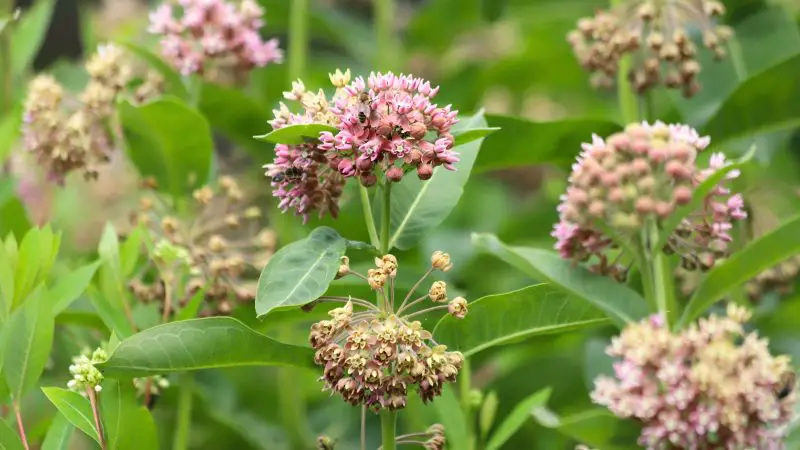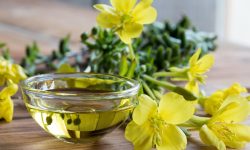Milkweed is not just a charming wildflower; it’s an essential host plant for monarch butterflies. If you’re passionate about pollinators and want to create a sanctuary in your backyard, growing milkweed from seed is one of the most impactful steps you can take. Not only will you provide food and habitat for monarch caterpillars, but you’ll also attract a variety of other beneficial insects.
In this guide, you’ll learn everything you need to know about how to grow milkweed from seed successfully. From selecting the right milkweed species to preparing the soil and ensuring proper germination, this comprehensive walkthrough will help you grow a lush and vibrant monarch garden.
Why Grow Milkweed from Seed?

Growing milkweed from seed allows you to choose from a wider variety of species, each adapted to different regions and climates. Seed-grown plants are often more resilient and better adapted to local conditions than transplants. It also gives you the satisfaction of knowing that your pollinator garden was nurtured from the very beginning.
Starting milkweed from seed helps restore declining milkweed populations. Due to agricultural practices and habitat loss, wild milkweed has become scarce in many areas. Planting milkweed helps reverse this trend and supports biodiversity in your local ecosystem.
Finally, growing from seed is cost-effective. A single packet of milkweed seeds can yield dozens of plants, making it a sustainable and economical option for gardeners hoping to make a big impact on monarch conservation.
Choosing the Right Milkweed Species for Your Region
Different species of milkweed thrive in different climates and soils. Selecting the right type is crucial for successful growth and supporting local wildlife. Native species are always the best choice, as they are already adapted to the region’s weather, soil, and pollinators.
In the eastern and central United States, Common Milkweed (Asclepias syriaca) is the most familiar and widely used. It thrives in sunny fields and disturbed soils, producing fragrant pink blooms that attract monarchs and other butterflies.
In the southern U.S., Butterfly Weed (Asclepias tuberosa) is a favorite. It features bright orange flowers and grows well in dry, sandy soils. It’s also a fantastic nectar source for adult butterflies.
If you live in the western U.S., Showy Milkweed (Asclepias speciosa) is an excellent choice. It resembles Common Milkweed but has slightly larger and more dramatic flowers. It prefers full sun and well-drained soils.
When to Start Milkweed Seeds
Timing is crucial when starting milkweed from seed. Many milkweed species require a period of cold stratification to break dormancy. This mimics the natural winter conditions seeds experience before germinating in spring.
If you plan to sow seeds outdoors directly, late fall is ideal. This allows the seeds to naturally stratify through winter and germinate as temperatures rise in spring. The freeze-thaw cycle of winter improves germination rates and mimics the plant’s natural lifecycle.
If you prefer to start milkweed seeds indoors, begin the process about 8 to 10 weeks before your region’s last expected frost date. This gives the seedlings enough time to grow strong before transplanting outdoors after the danger of frost has passed.
How to Stratify Milkweed Seeds
Most milkweed seeds benefit from cold stratification to improve germination success. This simple step replicates the cold winter months and encourages the seed’s natural growth cycle.
To stratify seeds at home, start by placing your seeds in a moist paper towel. Fold the towel and place it inside a plastic zip-top bag. Label the bag with the date and species name to keep track. Store the bag in your refrigerator for 30 to 45 days.
Check the paper towel periodically to ensure it stays moist but not soggy. After the stratification period is complete, your seeds will be ready to sow either indoors or directly in the garden, depending on your chosen method.
Starting Milkweed Seeds Indoors
Growing milkweed indoors gives you more control over germination and early growth. Use small pots or seed trays filled with a well-draining seed starting mix. Make a small hole about ¼ inch deep and place a single seed in each cell.
Cover the seeds lightly with soil and water them gently. Place the tray in a sunny window or under grow lights. Keep the soil consistently moist but not waterlogged. Maintain a temperature between 70°F and 75°F to encourage healthy germination.
Germination can take anywhere from 7 to 21 days, depending on the species and conditions. As seedlings emerge, continue to provide strong light and good airflow to prevent damping-off, a common fungal disease in seedlings.
Transplanting Milkweed Seedlings Outdoors
Once the seedlings are about 3 to 6 inches tall and have several sets of true leaves, they are ready to be hardened off. Begin this process about a week before transplanting by gradually introducing them to outdoor conditions.
Start by placing the seedlings outside in a shaded area for a few hours a day. Increase their exposure to sun and wind gradually over the course of several days. This helps them adjust to outdoor conditions and reduces transplant shock.
Choose a sunny spot in your garden with well-drained soil. Dig holes that are slightly larger than the root balls of your seedlings. Carefully remove each plant from its container, loosen the roots gently, and plant it at the same depth it was growing indoors. Water thoroughly after planting.
Direct Sowing Milkweed Seeds in the Garden
For those who prefer a more natural approach, direct sowing milkweed seeds is simple and effective. Choose a location that receives full sun for at least six hours per day. Loosen the soil with a rake or hoe and remove any weeds or debris.
Scatter the stratified seeds evenly over the soil surface. Press them gently into the ground, ensuring good seed-to-soil contact, but do not bury them too deeply. Milkweed seeds need light to germinate, so a light dusting of soil is sufficient.
Water the area gently to settle the seeds. Continue to keep the soil moist during the germination period. Seedlings should emerge in a few weeks, depending on temperature and soil conditions.
Caring for Milkweed Plants Throughout the Season
Milkweed plants are relatively low-maintenance once established. During the first year, focus on consistent watering to help roots develop. Deep watering once or twice a week is better than frequent shallow watering, as it encourages deep root systems.
Once mature, milkweed is drought-tolerant and usually requires little supplemental watering. It prefers full sun and grows best in average to slightly sandy soils. Avoid overly rich or wet soils, as these can cause root rot or excessive leafy growth at the expense of flowers.
Deadheading spent blooms can encourage further flowering and help keep the plant tidy. However, if you want the plant to self-seed for future growth, allow some pods to mature naturally. In late fall, you can cut back the stems to the ground or leave them standing to provide winter habitat for insects.
Encouraging Monarchs to Visit Your Milkweed
Milkweed is the only plant monarch caterpillars can eat, so simply growing it invites these butterflies to your garden. Plant several milkweed species together to increase diversity and bloom periods. This ensures food is available when monarchs migrate through your region.
Avoid using pesticides or herbicides in your garden, especially on or near milkweed. Even small amounts can be lethal to monarch eggs, larvae, and adult butterflies. Embrace a natural, chemical-free gardening approach to create a safe haven for pollinators.
Adding other nectar-rich flowers like coneflowers, zinnias, and black-eyed Susans can further attract adult monarchs. These companion plants provide additional food sources and contribute to a thriving butterfly ecosystem.
Harvesting and Saving Milkweed Seeds
If you want to expand your monarch garden or share seeds with others, harvesting your own milkweed seeds is rewarding and easy. Wait until the pods turn brown and begin to crack open naturally. This signals that the seeds are mature and ready for collection.
Open the pods carefully and separate the seeds from the fluffy white silk. One trick is to place the open pod in a paper bag and shake it to loosen the seeds. You can also use a fine mesh strainer to help separate seeds from fluff.
Store the seeds in a cool, dry place in a labeled envelope or container. For best results, stratify your stored seeds before planting them the following year. Properly stored milkweed seeds can remain viable for several years.
Common Problems When Growing Milkweed from Seed
Although milkweed is a hardy plant, there are a few challenges to be aware of. One common issue is poor germination, often due to lack of cold stratification. Ensure you properly chill your seeds before sowing to improve success rates.
Overwatering can cause seedlings to rot or become infected with fungal diseases. Always use well-draining soil and water only when needed. Ensure good airflow around indoor seedlings to reduce humidity-related issues.
Aphids are another common problem, especially the bright orange Oleander Aphid. While unsightly, they rarely cause serious damage. Spray them off with water or encourage natural predators like ladybugs. Avoid chemical controls that may harm monarchs or other beneficial insects.
The Importance of Milkweed in Monarch Conservation
Monarch butterflies rely on milkweed to complete their life cycle. Without it, they cannot lay eggs or feed their caterpillars. Habitat loss, pesticide use, and climate change have contributed to a drastic decline in monarch populations.
By planting milkweed in your garden, you play a vital role in supporting this iconic species. Even a small patch of milkweed can become a refuge for eggs, larvae, and adult butterflies. When combined with native nectar plants, your garden becomes a corridor of life for migrating monarchs.
Community efforts to plant milkweed across cities, schools, parks, and backyards are making a measurable difference. Your decision to grow milkweed from seed not only enhances your landscape but also contributes to a continental conservation movement.
Creating a Monarch Waystation with Milkweed
A Monarch Waystation is a certified habitat that provides the resources necessary for monarchs to sustain their migration and breeding. By planting milkweed and nectar-rich flowers, you can register your garden as a waystation and contribute to citizen science.
To qualify, your garden should include at least 10 milkweed plants of one or more species, along with several nectar plants. It should receive full sun and be protected from pesticides. Providing shelter through shrubs or tall grasses adds additional benefits.
Registering your garden as a waystation not only helps monarchs but also educates others about the importance of pollinator-friendly gardening. It’s a powerful way to inspire neighbors and schools to take part in protecting wildlife.
Frequently Asked Questions About Growing Milkweed from Seed
How long does it take for milkweed seeds to germinate?
Milkweed seeds typically germinate in 7 to 21 days, depending on temperature, moisture, and species. Cold stratification can improve germination success significantly.
Can I plant milkweed seeds without cold stratification?
Some tropical species may not need stratification, but most native milkweed seeds benefit greatly from it. Skipping stratification can result in low or delayed germination rates.
Is milkweed safe to grow around pets or children?
Milkweed contains toxic compounds that can be harmful if ingested in large quantities. While not typically dangerous with casual contact, it’s best to educate children and supervise pets around the plant.
How do I stop aphids from harming my milkweed?
Use a strong stream of water to remove aphids or encourage natural predators like ladybugs. Avoid insecticides, as they can harm monarch caterpillars and other pollinators.
When is the best time to plant milkweed seeds?
Late fall is ideal for direct sowing outdoors to allow natural stratification. For indoor starts, begin 8 to 10 weeks before your last expected frost date.
Final Thoughts on Growing Milkweed from Seed
Growing milkweed from seed is a simple, cost-effective, and impactful way to support monarch butterflies. From seed stratification to full-bloom habitat, every step brings you closer to creating a vibrant, life-filled garden that serves an essential ecological role.
With the right species selection, proper planting methods, and a little patience, your garden will become a thriving monarch oasis. In return, you’ll be rewarded with the flutter of orange wings, the hum of pollinators, and the joy of knowing you made a difference.






